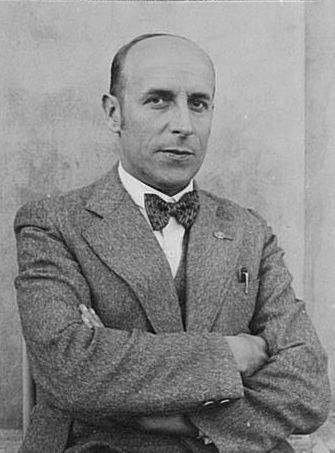Engineer Maximilian Eder worked initially on the chemical analysis of camouflage paint for Luftgaukommando XVII in Vienna before moving in 1942 to the Institut für Denkmalpflege (Institute for Monument Preservation). From July 1943 he conducted chemical and physical analyses for the planned salvaging of artworks in Salzbergwerk Altaussee. In July 1944 he was transferred to Aussee. He was responsible in the mine for the continuous chemical and physical monitoring of the artworks stored there. Until the end of 1945 he examined around 4,000 objects, documented the results and conducted climate controls. He was also involved in the storage of arriving transports. Herbert Seiberl, head of the Institute for Monument Preservation made him his representative in Aussee, and later Eder also deputized for Hermann Michel as supreme head of the salt mine art salvaging operation. According to the resistance fighter Josef Plieseis, Eder was an active member of the resistance movement in the Salzkammergut from January 1945. After the war, Eder remained in Aussee, initially as local manager of the art stored in the salt mine under the direction of Landeskonservator für Oberösterreich (head curator of Upper Austria) Franz Juraschek, and from April 1946 as administrator of the staatliches Kunstgutdepot (state art depot) in Salzbergwerk Altaussee for the US military government in Linz, Property Control department. In November 1947, having moved to the Bundesministerium für Vermögenssicherung und Wirtschaftsplanung (Federal Ministry for Securing Property and Economic Planning), he left Aussee, and his employment there was terminated in February 1948. Nothing further is known about Eder's life.
Maximilian Eder

Theodor Brückler/Ulrike Nimeth, Personenlexikon zur Österreichischen Denkmalpflege, Wien 2001.
Eva Frodl-Kraft, Gefährdetes Erbe. Österreichs Denkmalschutz und Denkmalpflege 1918–1945 im Prisma der Zeitgeschichte, Wien-Köln-Weimar 1997.
Sepp Plieseis, Vom Ebro zum Dachstein. Lebenskampf eines österreichischen Arbeiters, Linz 1946.
Anneliese Schallmeiner, "Die modernen Nibelungen salzen ihre Schätze ein". Altaussee als Bergungsort des Instituts für Denkmalpflege, in: Pia Schölnberger/Sabine Loitfellner (Hg.), Bergungen von Kulturgut im Nationalsozialismus. Mythen – Hintergründe – Auswirkungen (= Schriftenreihe der Kommission für Provenienzforschung 6), Wien-Köln-Weimar 2016, 103–128: URL: doi.org/10.7767/9783205201564-007.
BDA-Archiv, Restitutionsmaterialien, K.22, M.1a, unfol., Bergungs-Ballade, Gutachten von Maximilian Eder, 10.3.1944.
BDA-Archiv, Restitutionsmaterialien, K.22, M. 2, fol.69, Gutachten von Maximilian Eder, 20.7.1943.
BDA-Archiv, PA Maximilian Eder [1942–1948].
DÖW, Nr. 3296a, Bericht Ing. Eder.
DÖW, Nr. 10610, Eder, Kunstbergungsaktion.
DÖW, Nr. 20000/e36, Kopie Gesuch Eder, 25.1.1949.
OeStA/AdR, UWK, BMU, Personalakten, Eder Maximilian.
OeStA/AdR, Finanzen, BMF, K. 2.573, Beiakten zu den Personalakten, Ing. Max Eder.
